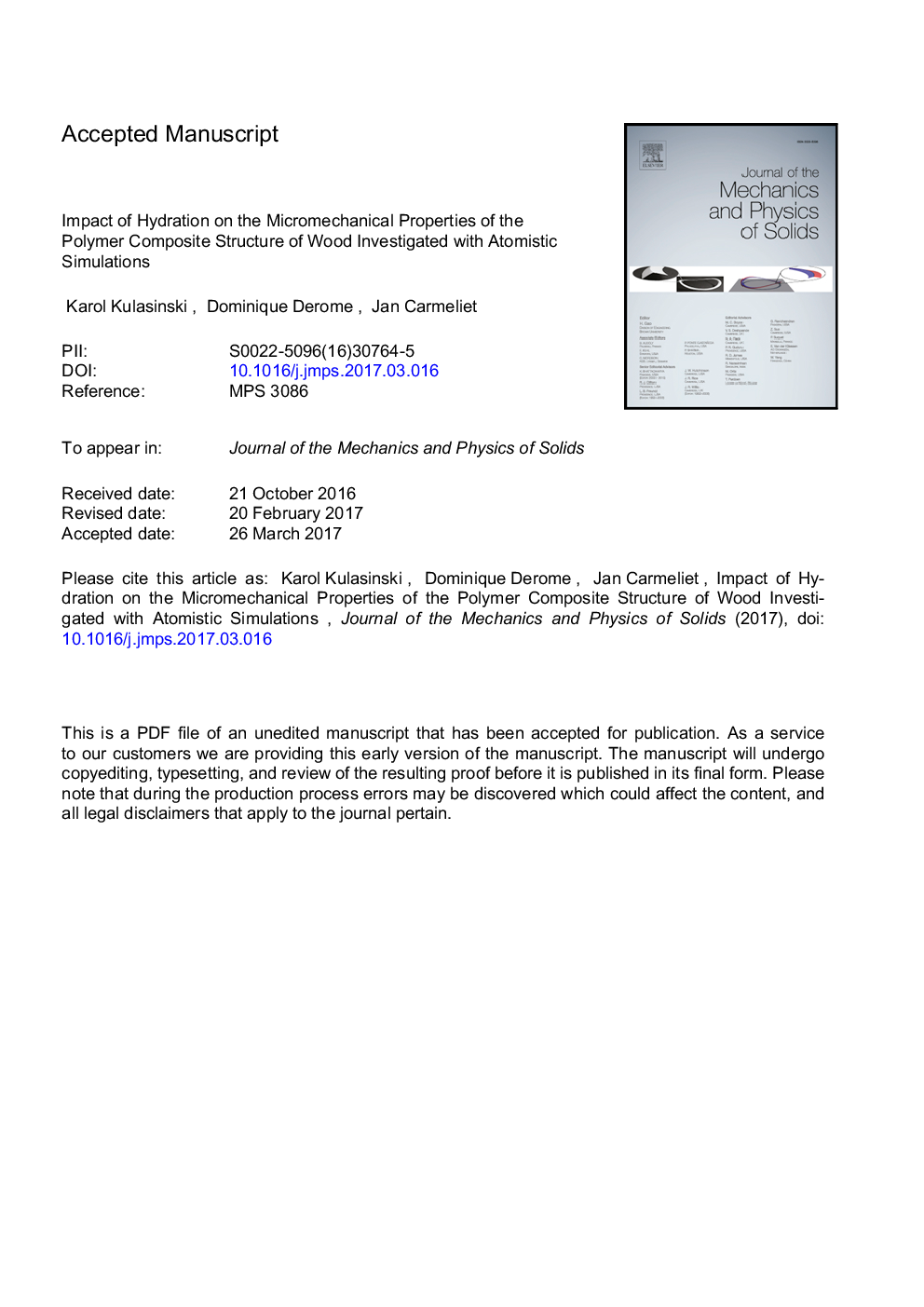| Article ID | Journal | Published Year | Pages | File Type |
|---|---|---|---|---|
| 5018288 | Journal of the Mechanics and Physics of Solids | 2017 | 23 Pages |
Abstract
A model of the secondary layer of wood cell wall consisting of crystalline cellulose, hemicellulose, and lignin is constructed and investigated with molecular dynamics simulations in the full range of hydration: from dry to saturated state. The model is considered a composite with the cellulose fibrils embedded in hemicellulose and lignin, forming a soft amorphous matrix. Its complex structure leads to nonlinear and anisotropic swelling and mechanical weakening. The water diffusivity through the pores is affected by an interplay between stiff cellulose fibers and weakening amorphous polymers. The formation and breaking of hydrogen bonds within the polymers and at the interfaces is found to be the underlying mechanism of adsorption-induced mechanical softening. The model is tested for adsorption isotherm, mechanical moduli, hydrogen bonds, and water diffusivity that all undergo a substantial change as the hydration increases. The determined physical and mechanical properties, changing with hydration, agree qualitatively with experimental measurements.
Related Topics
Physical Sciences and Engineering
Engineering
Mechanical Engineering
Authors
Karol Kulasinski, Dominique Derome, Jan Carmeliet,
